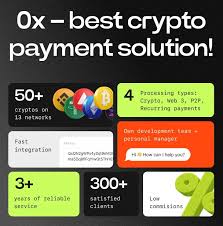
Exploring the Future of Web3 Payment Solutions
The emergence of Web3 technology has opened new doors for financial transactions, fundamentally altering how users and businesses think about payments. Unlike traditional payment systems, Web3 payments utilize blockchain technology and decentralized networks to facilitate transactions that are faster, more secure, and cost-effective. For businesses looking to adopt these innovative solutions, a reliable web3 payment https://0xprocessing.com/payments-for-business/web3-payment-gateway/ is essential in navigating this new ecosystem.
What is Web3 Payment?
Web3 payment refers to the use of decentralized technology to conduct financial transactions over the internet. In contrast to traditional Web2 systems, which are centralized and reliant on intermediaries such as banks and payment processors, Web3 leverages blockchain technology to enable peer-to-peer transactions directly between parties. This means that users can send and receive funds without relying on a third-party institution, reducing costs and streamlining the payment process.
The Benefits of Web3 Payments
One of the main advantages of Web3 payments is the reduction of transaction fees. Traditional payment processors often charge substantial fees for processing transactions, especially cross-border payments. Web3 eliminates these intermediaries, allowing for significantly lower fees, benefiting both businesses and consumers.
Additionally, Web3 payments are inherently more secure due to the use of cryptographic techniques for transaction validation. Each transaction is recorded on a blockchain, which is decentralized and immutable. This not only helps to prevent fraud but also provides a transparent ledger that users can access at any time, adding a layer of trust and accountability to financial transactions.
Decentralization and Ownership
The notion of decentralization is pivotal in understanding Web3 payments. By distributing power away from central authorities, users regain control over their finances. In traditional systems, users often don’t have full ownership of their assets, as funds are held in centralized accounts. However, with Web3, users can hold their assets directly in their digital wallets, granting them full ownership and custody over their funds.
This shift empowers individuals and businesses alike, enabling innovation and financial freedom. For instance, smart contracts—self-executing contracts with the terms of the agreement directly written into code—can automate transactions without the need for intermediaries, increasing efficiency and reducing the risk of disputes.
Real-World Applications of Web3 Payments
To illustrate the potential of Web3 payments, consider various sectors where these systems are beginning to integrate. E-commerce is one of the most prominent areas seeing the adoption of Web3 payment solutions. Companies are now enabling customers to pay using cryptocurrencies, thus appealing to a tech-savvy customer base while reducing transaction times.
Furthermore, the gaming industry is also leveraging Web3 payments, particularly through the rise of play-to-earn models. Players can earn cryptocurrencies and NFTs (non-fungible tokens) that they can then utilize or trade. This has created entire ecosystems around gaming that are driven by decentralized transactions, reshaping the traditional view of in-game purchases and ownership.
Challenges in Adopting Web3 Payment Solutions
Despite the numerous advantages, the transition to Web3 payments is not without its challenges. One of the major hurdles is regulatory compliance. Governments around the world are still grappling with how to approach cryptocurrencies and decentralized finance (DeFi). Companies must navigate this uncertain regulatory landscape to remain compliant while adopting Web3 solutions.
Moreover, the volatility of cryptocurrencies can also pose significant risks for businesses. Prices can fluctuate dramatically, creating a challenge for businesses that wish to accept payments in cryptocurrencies. Companies need to weigh the potential rewards against the risks involved in accepting digital assets as payment.
The Future of Web3 Payments
As more businesses recognize the benefits of Web3 payment solutions, we can expect substantial growth in this area. The global move towards decentralization is gaining momentum, supported by technological advancements and increasing acceptance of blockchain technology.
In the coming years, we may see the emergence of new payment models that further integrate Web3 with everyday transactions. Governments might introduce their own digital currencies associated with existing fiat currencies, blurring the line between centralized and decentralized finance.
Conclusion
Web3 payments are more than just a trend; they represent a significant shift in the financial landscape. By embracing these decentralized solutions, businesses can enhance their payment processes, reduce costs, and provide a superior experience to their customers. As technology continues to evolve, staying informed and adaptable will be key to leveraging the full potential of Web3 payments and carving out a competitive edge in today’s digital economy.
wordpress theme by initheme.com
